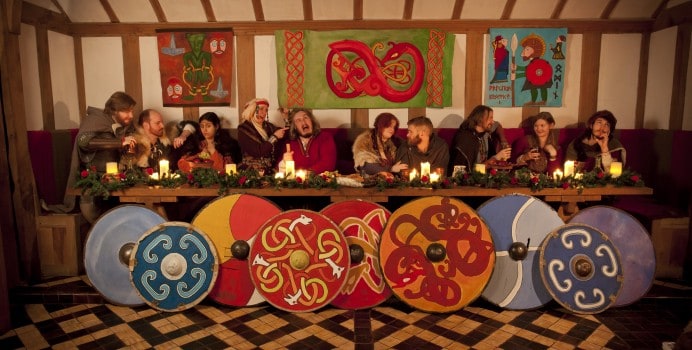
Some Viking Marriage customs survive today
The Norse held their weddings on a Friday, the day of Frigg, the goddess of marriage and fertility. The time of the year was also crucial. Late summer or autumn were the preferred times. This period of the year was harvest time, a time of abundance and plenty. A good supply of meat, fruit, and grain was essential to ensure an amply provisioned wedding feast.
One beverage was of particular importance. The ‘bridal ale’ was first consumed in a loving cup by the bride and groom at the marriage feast. The couple would use the mead-like brew to seal their union with a toast to Odin and Freya. The bridal ale was brewed with a good deal of honey, to ensure the fertility of the newlyweds. Their families gifted the couple with enough of this sweet beer to last them a month- a custom that gives us the modern term ‘honeymoon.’
Before the wedding, both bride and groom took a ritual steam bath. Although they did not wear special clothes for the wedding, both wore specific tokens on their special day. For the bride, this was a floral wreath upon her head. For the groom, it was a sword, purposely robbed from one of his family’s burial mounds (or an old family sword buried in a fake mound that he ritually disinterred.) This sword was presented to the bride at the exchange of vows, as a way of making her a custodian of his family line.
As is common today, the bride and groom exchanged rings- both finger rings and arm rings as they spoke their vows. Once the ceremony was complete, the “brud hlaup” occurred. This was a race run by both wedding parties to the feasting hall. Whoever arrived last served the ale. But before the bride could enter, she had to be escorted over the threshold by the groom. The Norse, like many pagan peoples, believed thresholds were dangerous places for in transition to a new stage in their life.
The groom would then thrust a new sword, a gift from his bride, into the central pillar of the house. The depth of the resulting cut was used to determine the success of their union. Then, after the feast, eight witnesses lighted the bridal couple to bed. The groom then removed the bridal wreath from the bride- a ritual deflowering before the real event.

